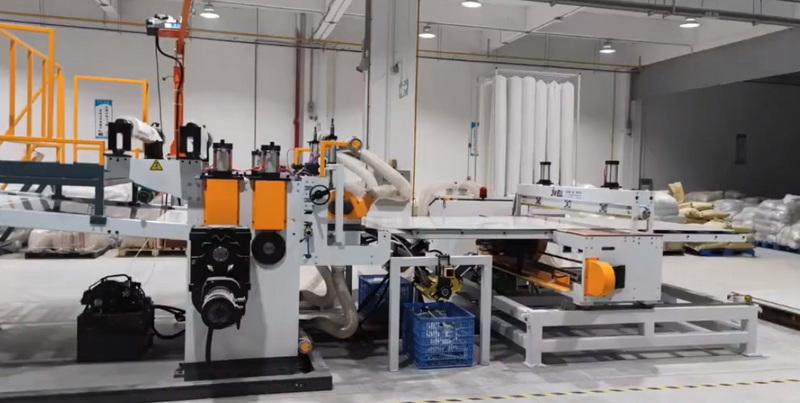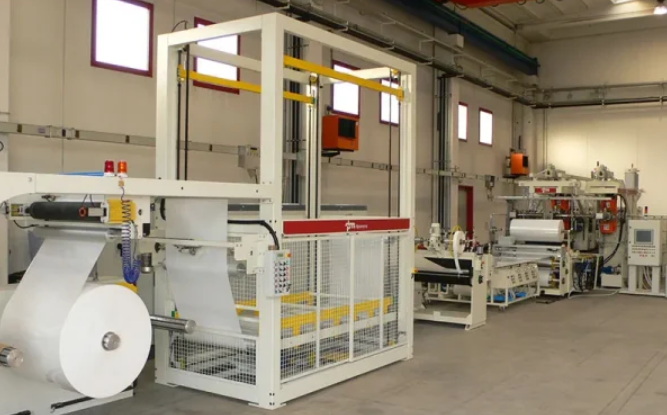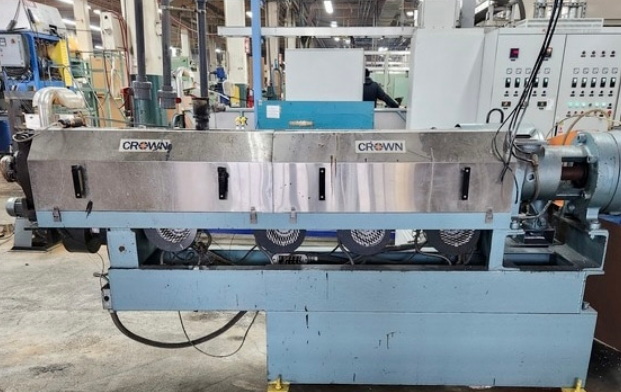Content Menu
● Introduction to Continuous Extrusion Machinery
>> Key Components of Continuous Extrusion Machinery
● Advantages of Continuous Extrusion Machinery
>> High Production Speeds
>> Reduced Material Waste
>> Consistent Product Quality
>> Flexibility in Material Processing
>> Energy Efficiency
● Applications of Continuous Extrusion Machinery
>> Automotive Industry
>> Construction Industry
>> Aerospace Industry
● Technological Innovations in Continuous Extrusion Machinery
>> Integration of IoT and AI
>> Advanced Material Technology
>> Precision Engineering
● Future Trends and Opportunities
>> Sustainable Production Methods
>> Emerging Markets and Sectors
● Conclusion
● Frequently Asked Questions
>> 1. What are the primary benefits of using continuous extrusion machinery?
>> 2. How does continuous extrusion machinery contribute to sustainability?
>> 3. What role does automation play in continuous extrusion machinery?
>> 4. What are some emerging trends in the continuous extrusion machine market?
>> 5. How does continuous extrusion machinery support industrial diversification?
● Citations:
Continuous extrusion machinery has revolutionized the manufacturing sector by offering unparalleled efficiency, precision, and versatility in producing continuous profiles or shapes from various materials, including metals, plastics, and composites. This article delves into the ways continuous extrusion machinery enhances production efficiency, explores its applications across different industries, and discusses future trends and innovations.

Introduction to Continuous Extrusion Machinery
Continuous extrusion machines are designed to process materials continuously, forcing them through a die to create products with consistent cross-sections. This process is widely used in industries such as automotive, construction, aerospace, and consumer goods for producing components like pipes, tubes, profiles, and cables.
Key Components of Continuous Extrusion Machinery
1. Extruder: The heart of the machine, responsible for melting and mixing the material.
2. Die: Shapes the molten material into the desired form.
3. Cooling System: Ensures the extruded product solidifies and maintains its shape.
Advantages of Continuous Extrusion Machinery
High Production Speeds
Continuous extrusion machines can process large volumes of material quickly, enabling manufacturers to meet high demand without compromising product quality. For instance, in the automotive sector, these machines are used to produce lightweight aluminum profiles for vehicle frames, contributing to improved fuel efficiency and reduced emissions.
Reduced Material Waste
The continuous process minimizes material waste by optimizing the amount of material used in each production run. This leads to significant savings for businesses, both in terms of raw materials and disposal costs.
Consistent Product Quality
Real-time monitoring systems allow operators to detect anomalies and make adjustments promptly, ensuring consistent product quality and minimizing defects.
Flexibility in Material Processing
Continuous extrusion machines can handle a variety of materials, offering versatility in product design and manufacturing. This includes metals like aluminum and copper, as well as plastics and composites.
Energy Efficiency
Modern continuous extrusion machines are designed to be energy-efficient, reducing the carbon footprint of the manufacturing process. This is particularly important for industries aiming to minimize their environmental impact.
Applications of Continuous Extrusion Machinery
Automotive Industry
In the automotive sector, continuous extrusion is used to produce lightweight aluminum profiles for vehicle frames. This contributes to improved fuel efficiency and reduced emissions, aligning with the industry's focus on sustainability.
Construction Industry
Continuous extrusion machines are used in construction to create durable and high-performance components, such as window frames and structural supports, emphasizing durability and aesthetic appeal.
Aerospace Industry
In aerospace, these machines are utilized for producing lightweight yet strong components, which are crucial for aircraft performance and safety.
Technological Innovations in Continuous Extrusion Machinery
Integration of IoT and AI
The integration of IoT technology facilitates remote monitoring and control of extrusion lines, providing real-time data analytics that can be used to optimize operations and predict maintenance issues. AI algorithms can identify patterns and predict outcomes, leading to more precise control over quality and process efficiency.
Advanced Material Technology
Developments in materials science, including the use of nano-composites and specialized polymers, enhance the properties of extruded products. These materials can improve durability, reduce weight, and allow new industry applications.
Precision Engineering
Precision engineering plays a crucial role in refining the extrusion process through tight tolerances on equipment components and sophisticated control systems. Custom-engineered screw and die designs can dramatically enhance material flow, reduce defects, and improve output quality.

Future Trends and Opportunities
Sustainable Production Methods
As environmental regulations tighten globally, there is a growing demand for extrusion processes that minimize waste generation and energy consumption. Manufacturers can capitalize on this trend by investing in technologies that promote recycling of materials and reduce carbon footprint during production.
Emerging Markets and Sectors
Expanding applications of continuous extrusion in emerging industries such as renewable energy and medical devices present untapped opportunities for market expansion. Innovations in materials science and design flexibility offer avenues for developing specialized extruded products tailored to niche applications.
Conclusion
Continuous extrusion machinery has transformed the manufacturing landscape by offering high efficiency, consistency, and cost-effectiveness. Its ability to process a wide range of materials, reduce waste, and operate with minimal labor intervention makes it indispensable in industries such as automotive, construction, and aerospace. As technology continues to evolve, we can expect even more sophisticated automation systems and expanded capabilities in the field of extrusion.

Frequently Asked Questions
1. What are the primary benefits of using continuous extrusion machinery?
Continuous extrusion machinery offers several benefits, including high production speeds, reduced material waste, consistent product quality, and flexibility in material processing. These advantages make it an ideal choice for industries requiring high-volume production with precise dimensional control.
2. How does continuous extrusion machinery contribute to sustainability?
Continuous extrusion machines are designed to be energy-efficient, reducing the carbon footprint of manufacturing processes. Additionally, they minimize material waste, which aligns with global efforts to reduce environmental impact.
3. What role does automation play in continuous extrusion machinery?
Automation, including IoT and AI technologies, enhances the efficiency and precision of extrusion processes. It allows for real-time monitoring, predictive maintenance, and optimized production conditions, ensuring consistent product quality and minimizing downtime.
4. What are some emerging trends in the continuous extrusion machine market?
Emerging trends include the integration of smart technologies, innovations in materials science, and the expansion into new sectors such as renewable energy and healthcare. These trends are driven by the need for sustainable and efficient manufacturing processes.
5. How does continuous extrusion machinery support industrial diversification?
Continuous extrusion machines can process a variety of materials, enabling manufacturers to diversify their production lines and cater to multiple industries simultaneously. This versatility is crucial for businesses looking to expand their market reach and adapt to changing demand.
Citations:
[1] https://www.yjing-extrusion.com/how-does-an-automatic-extrusion-machine-improve-production-efficiency.html
[2] https://jieyatwinscrew.com/blog/unlocking-the-potential-of-extrusion-machines/
[3] https://datahorizzonresearch.com/continuous-extrusion-machine-market-21122
[4] https://www.alamy.com/stock-photo/extrusion-machine.html
[5] https://www.youtube.com/watch?v=Tp2Rdx69SSo
[6] https://www.orientps.com/continuous-extrusion-machinery-product/
[7] https://blog.goldsupplier.com/plastic-extrusion-machines/
[8] https://www.la-plastic.com/post/why-is-extrusion-manufacturing-popular
[9] https://sites.google.com/view/marketresearchweb/internet-research/continuous-extrusion-machine-market
[10] https://www.marketresearchintellect.com/blog/continuous-extrusion-machine-market-booms-a-game-changer-for-manufacturing-and-construction/
[11] https://continuousextrusion.com/profile/exhibition.html/148320/0/
[12] https://www.themeltechcompany.co.uk/non-ferrous-metal-extrusion/why-continuous-rotary-extrusion/
[13] https://www.spssolutions.nl/how-efficiently-runs-your-extrusion-line/?lang=en
[14] https://hestico.co.za/extrusion-machine-essential-in-modern-plastic-production/
[15] https://www.atieuno.com/project/extrusion-management-system-case-study/
[16] https://www.yjing-extrusion.com/how-can-extrusion-machinery-supplies-improve-your-production-efficiency.html
[17] https://www.jpbindustry.com/benefits-co-extrusion-process.html
[18] https://ima.it/pharma/feasibility-studies-of-continuous-manufacturing-of-injection-molding-tablets/
[19] https://abhiplastics.com/the-ultimate-guide-to-boosting-productivity-with-plastic-extrusion-machines/
[20] https://www.macocorporation.com/blog/extruder-machine/
[21] https://www.pearltechinc.com/2025/02/13/extrusion-equipment-blown-film-efficiency/
[22] https://www.jwellmachine.com/analysis-of-plastic-extrusion-technology/
[23] https://www.shutterstock.com/search/extrusion-machine
[24] https://www.istockphoto.com/photos/extruder-machine
[25] https://stock.adobe.com/search?k=extruder+machine






















